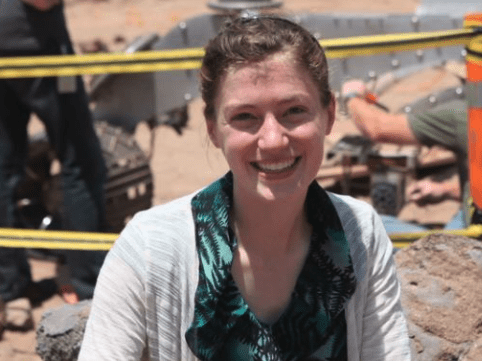Sending a working rover to Mars is a remarkable feat.
Keeping the rover working longer than expected is even more remarkable.
When the rover, Curiosity, landed on Mars on August 6th, 2012, the mission was planned to last 90 sols (Martian days), equivalent to approximately 92.73 Earth days. To this day, Curiosity has been in operation for more than 3,130 sols.
Mallory Lefland and Amanda Steffy are two of the incredible engineers who have helped keep Curiosity alive behind the scenes for over 34x longer than originally expected.
Mallory Lefland
Lefland’s work as a fault protection engineer revolves around making sure Curiosity can protect itself. Because we can only send a few communications per day to Curiosity, that leaves it with a lot of downtime.
In between these relays of communication from Earth, Curiosity has to be able to determine if it is in danger and protect itself from internal faults. To help “teach” Curiosity how to keep itself alive, Lefland imagines scenarios that could occur and then writes and sends corresponding code. She is constantly looking for ways to improve Curiosity and its ability to recognize various threatening situations.
Once Curiosity learns to recognize these faults, it should then know how to go into the safest mode possible so the team on Earth can assess the situation and send back the proper commands to it. These fault protections are crucial to the longevity of the rover’s life.
Amanda Steffy
Steffy works directly on the “Mars Yard” here on Earth. Her job is to analyze different parts of the rover and take them to failure.
Yes, take them to failure.
Steffy puts together scenarios and actual terrains that mimic those of Mars. For example, the Curiosity team realized that the rocks of Mars were sharper on the edges than they initially expected and, as a result, Steffy had to figure out how long the wheels would last. She set up a course and ran actual replicas of Curiosity’s wheels over the rocks until the wheels experienced failure. She was able to use this data to know time limits and relay back certain conditions to avoid.
Steffy plays a key role in keeping Curiosity alive by taking these replicas to failure and developing plans to keep it safe from potentially dangerous situations.
Do you know the limits of your systems?
We can help you with that.
To hear more about the art of engineering, sign up for our newsletter.









